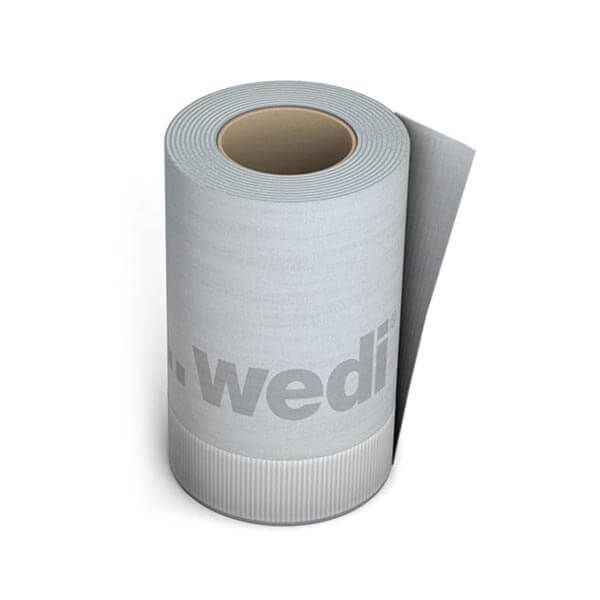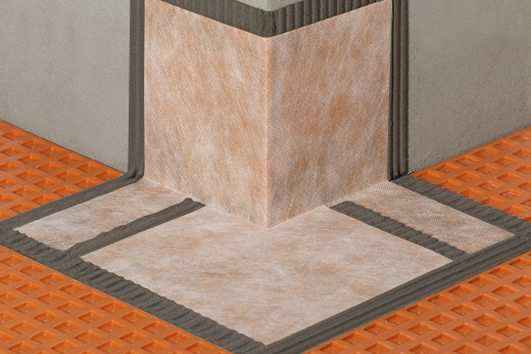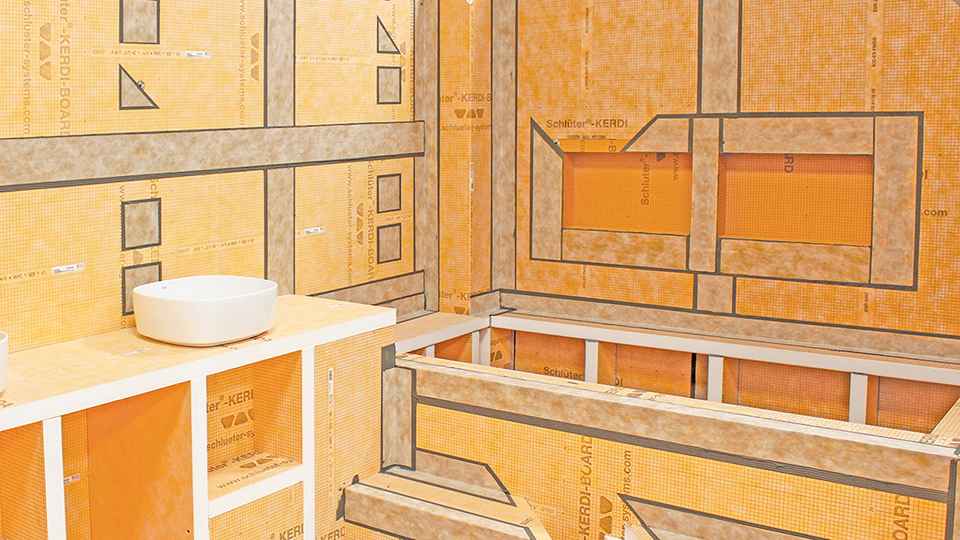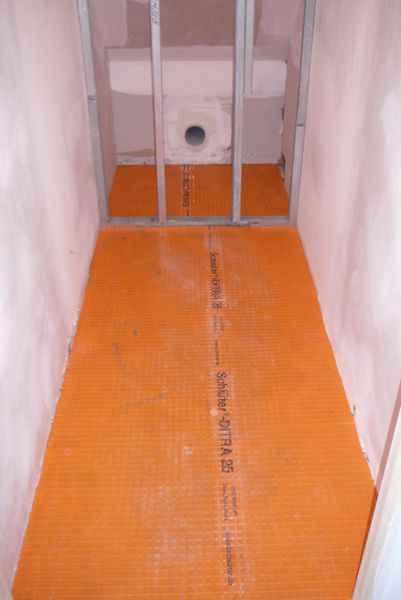Difference between waterproofing systems for the shower and bathroom
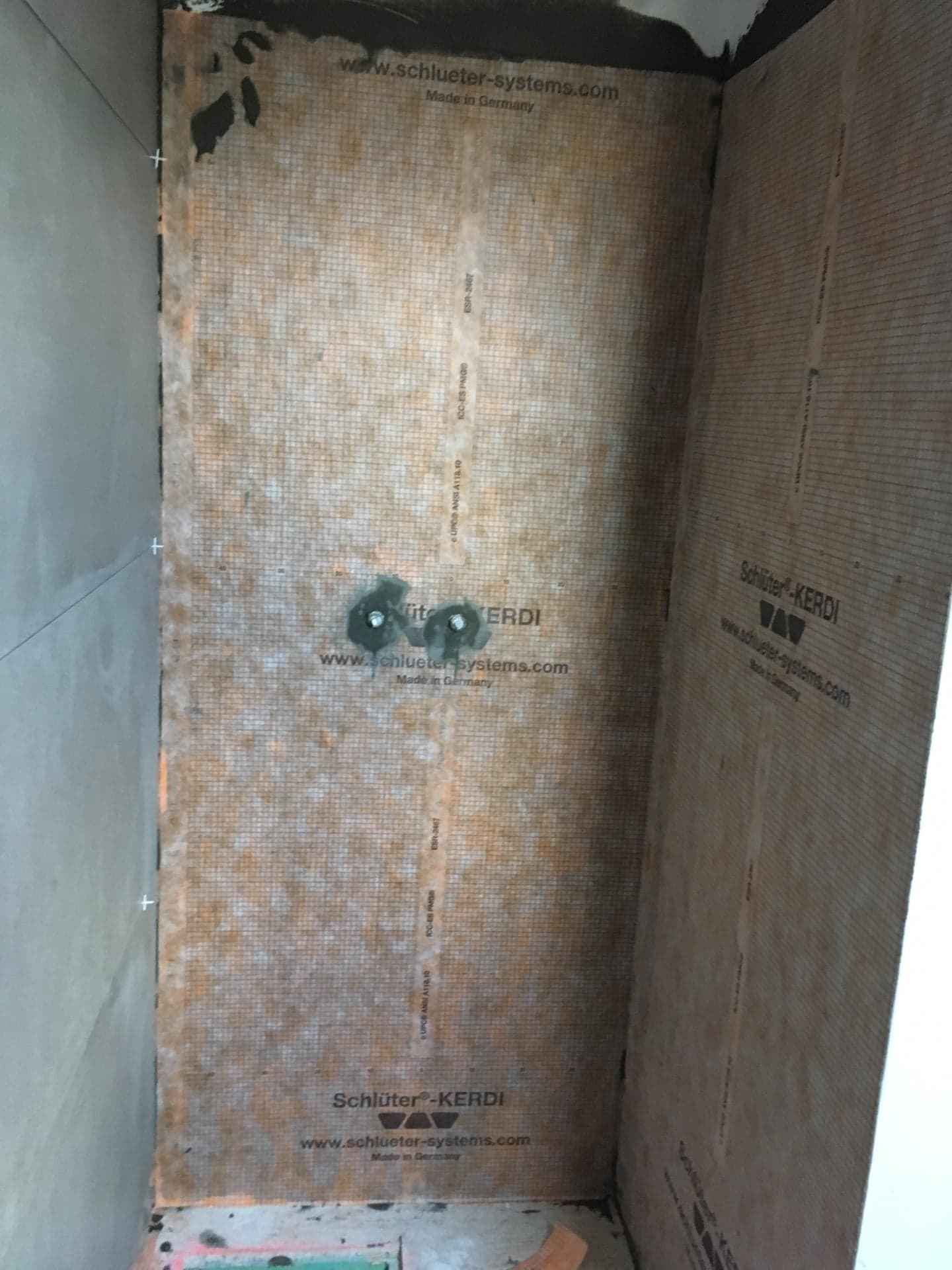
Difference between waterproofing systems for the shower and bathroom
Difference between waterproofing systems for the shower and bathroom
Bathroom waterproofing is an essential element to ensure the safety and comfort of users. Indeed, water and humidity present in this room can cause significant damage to the walls, floor, and electrical installations, but also promote the proliferation of molds and bacteria harmful to health.
A poorly sealed bathroom can also lead to overconsumption of water and energy, as well as high repair costs. It is therefore crucial to choose a suitable and quality waterproofing system, and to comply with the standards.
In this article, we will present the different waterproofing systems for shower rooms and bathtubs, as well as best practices to ensure optimal and durable waterproofing.
We warn you, you must respect the DTU and this same DTU (== standards) change according to the type of construction you have (OSB, traditional, etc.).
Differences between shower and bathroom waterproofing
The shape and size of the area to be waterproofed differ. A bathtub generally has higher walls and a larger surface to waterproof than that of a shower. Moreover, the bathtub can be recessed, semi-recessed, or placed on feet, which can influence the choice of waterproofing system.
The type of use and frequency of use can vary. A shower is often used daily, which can lead to a quicker wear of seals and waterproofing systems. Conversely, a bathtub may be used less frequently, but it can hold a larger quantity of water, which may increase the risks of leaks.
The type of covering and materials used for the manufacture of the shower or bathtub can also influence the choice of waterproofing system. For example, an Italian shower with cement tiles will require a different waterproofing system than an acrylic bathtub.
It is important to take into account the specifics of each installation to choose the most suitable waterproofing system and guarantee optimal and durable waterproofing. This will avoid infiltrations and consequences!
What are the different waterproofing systems for the bathroom?
There are several waterproofing systems for shower rooms and bathtubs, here are the main ones:
- Silicone seals: this is the most common waterproofing system. It is applied to the angles and junctions between the tiles, the bathtub or the shower tray, and the walls. The seals can be with acrylic, epoxy, polymer mastic, etc.
- Waterproofing tapes: they come in the form of adhesive rolls and are applied to the junctions between the tiles and the walls of the shower or bathtub. They are generally used in addition to silicone seals.
- Waterproofing membranes: they come in the form of sheets or rolls and are applied to the walls and floor of the shower or bathtub. They are particularly suited to Italian showers and large surfaces. It acts as an internal waterproofing covering.
- Liquid waterproofing products (== liquid waterproofing system): they come in the form of paint or resin and are applied to the walls and floor of the shower or bathtub. They form a waterproof and continuous layer, which perfectly fits the shapes of the surface to be treated.
- Shower trays with integrated waterproofing: they are equipped with an integrated waterproofing system, usually in the form of a membrane or waterproof coating. They are particularly suited to Italian showers.
Bricomachin generally recommends a mix of several solutions and techniques to improve waterproofing!
In general, the wall of your shower and/or bathroom is not waterproof/water-resistant. If your wall is made of plaster, green plasterboard (hydrofuge), OSB, or Fermacell/Rigidur, you are obliged to apply a protection against humidity and water from the bathroom/shower. In all cases presented below, these are waterproofing systems intended for this purpose.
Dismiss the misconceptions! Tiling is not waterproof! You cannot simply lay tiling (even if of good quality)! Over time, water or humidity will penetrate the tiling and attack the wall! Silicone is not meant to guarantee waterproofing by itself! It's in addition. We will come back to this later in this article. Green gyproc (green plasterboard) is not waterproof either!
Most common types of waterproofing on the market:
SPEC – for the easiest cases – not recommended on the floor
SEL - for more difficult access with a waterproofing guarantee
KERDI (the 3rd most expensive) - To properly protect your bathroom in a traditional house.
DITRA (the 2nd most expensive) - Ideal in a wooden frame house
WEDI (the most expensive)
1. Under-tile water protection system - SPEC
The SPEC is an under-tile water protection system that is in liquid form. It allows to easily spread the liquid (like a paint) in all possible places. The SPEC particularly protects against humidity and not against water. It is therefore to be proscribed in very fragile walls (such as for example an OSB partition).
Liquid waterproofing system - SEL
The SEL is a protection system in liquid form (like the SPEC) but has the particularity of protecting against humidity and against water. It is also easy to install because you are going to apply this product with a brush. Upon drying, it becomes somewhat of a plastic membrane. Small remark: the corners are also protected with tape.
KERDI
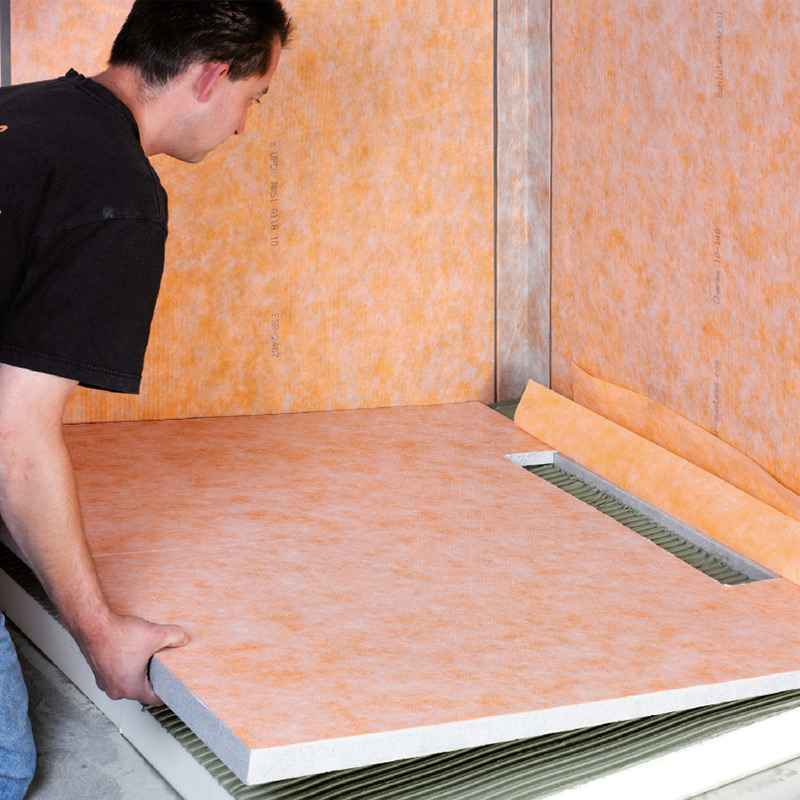
The Kerdi is a waterproofing mat that is solid and is placed using tile adhesive. This mat is more difficult to install than the SEL or SPEC but is probably more reliable if the placement is done according to the rules of the art. The placement is therefore much more delicate in all corners and incoming and outgoing angles. There are predefined angles and bands to install more easily but this costs a lot of money.
DITRA
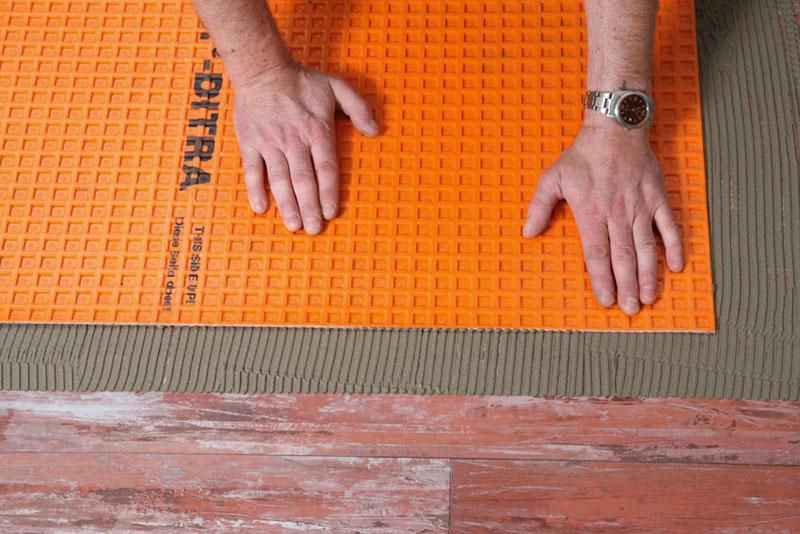
The DITRA is also a waterproofing mat similar to KERDI but more “solid”. This mat has all the advantages and disadvantages of the Kerdi but also participates in decoupling the tiling from your support. MANDATORY in a wooden frame house!
WEDI
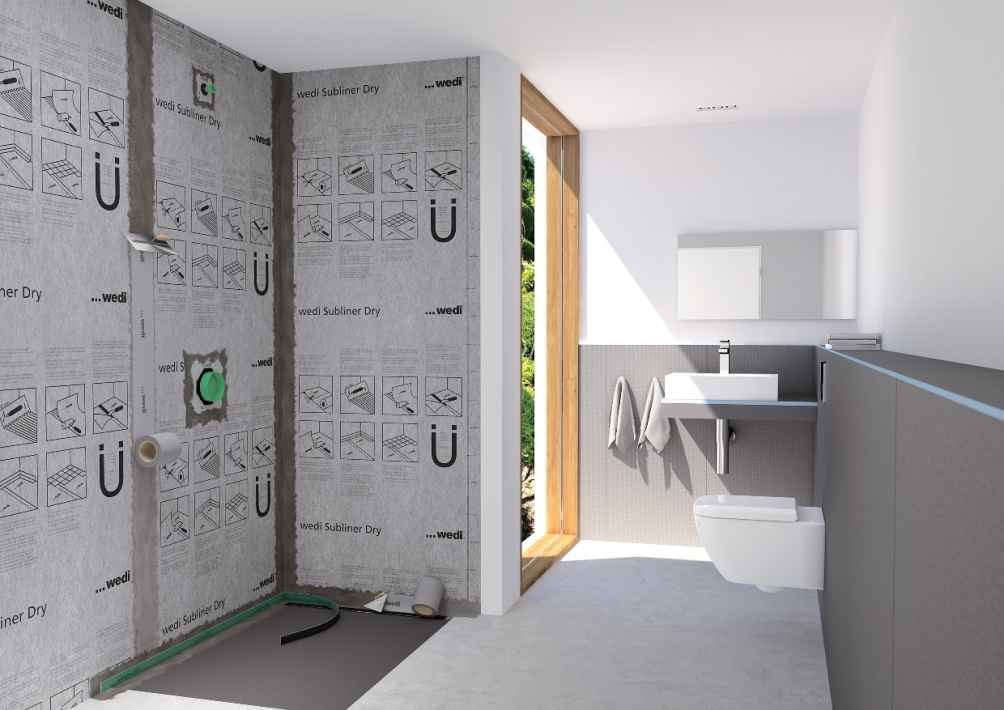
The WEDI is a waterproofing panel of all available sizes that is easily cuttable (somewhat like a rigid insulator). It participates in making the waterproofing quite easily but you need a bit more available space compared to other waterproofing systems.
Important remark: the presence of water must absolutely not be taken lightly, after a few years, the damage will be very important and it will probably be very difficult to correct the water problems! Do it right from the start and do not hesitate to mix waterproofing systems (1. liquid and 1 rigid) to increase the layers of protection!
SPEC |
SEL |
KERDI |
DITRA |
WEDI |
|
Waterproofing guaranteed |
no |
yes |
yes |
yes |
yes |
liquid |
yes |
yes |
no |
no |
no |
Rigid panel |
no |
no |
no |
no |
yes |
Price |
- |
+ |
.++. |
.+++. |
.++++. |
Decoupling |
no |
no |
no |
yes |
no |
Ease of installation |
Very easy |
Very easy |
Easy |
Easy |
Easy |
Follow our advice, you will increase the different layers of waterproofing in your shower by simple and effective means!
0. If your floor is made of wood, do not hesitate to apply a quality wood water repellent. Go to your local paint store and buy a pot!
1. Silicone all corners before starting your waterproofing. Optional but for what it costs, it can't hurt!
2. Apply your liquid waterproofing (SPEC or SEL). If you do not combine 2 types of waterproofing, ban the SPEC.
3. Apply your rigid waterproofing (Ditra or Kerdi).
4. Lay your tiling, it will also contribute to the waterproofing of your bathroom. Do not hesitate to add a water repellent in your adhesive, e.g., Sikalatex or an already water-repellent tile adhesive.
5. Water-repellent or epoxy grout!
6. Silicone the edges of your shower tray with a quality silicone (ms polymer)!
7. When installing your shower tray, use an expanding joint (frame type, for example compriband) in addition to the finishing silicone!
Never forget that your house is not the neighbor's, take into account all your walls, walls, floor that does not like to receive water!
Be meticulous when installing your seals around the shower trays and also pay careful attention to all connections, the most sensitive point when it comes to water infiltration on your floors!
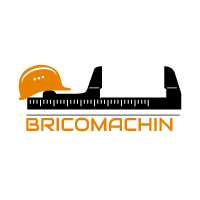

 Francais
Francais